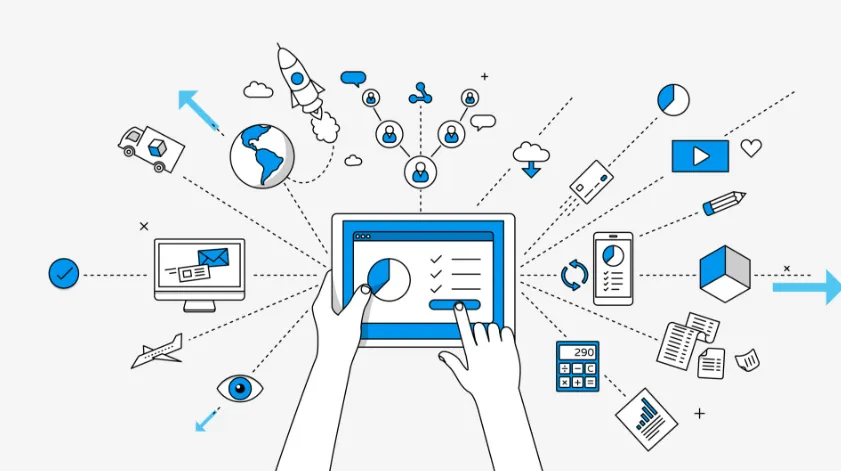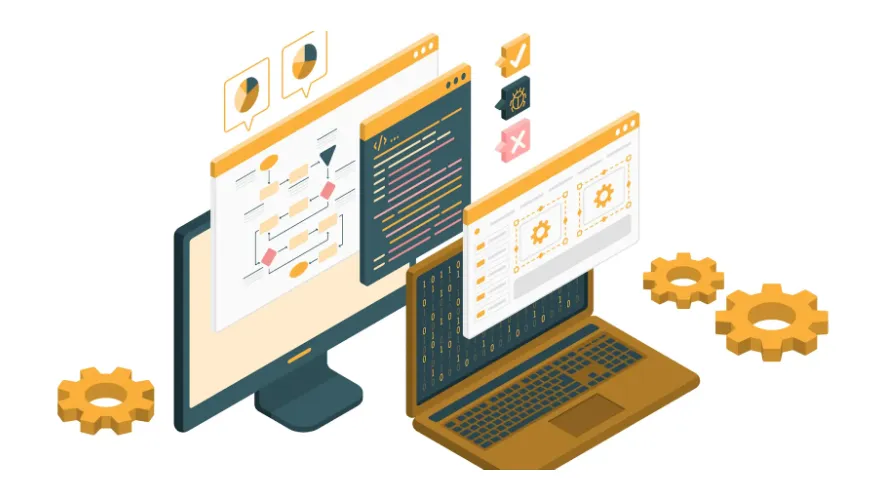Contents
Key Takeaways:
- SIEM is critical in enhancing cybersecurity through real-time monitoring and data analysis.
- Understanding key features of SIEM can help organizations mitigate security risks effectively.
- Proper implementation of SIEM requires strategic planning and resource allocation.
What Is SIEM?
SIEM (Security Information and Event Management) systems have become invaluable in modern cybersecurity. By consolidating various types of security data into a single platform, SIEM helps organizations identify potential threats more efficiently.
This method makes threat detection more efficient by combining logs from various sources, such as firewalls, intrusion detection systems, and antivirus software, to provide actionable insights that can be analyzed instantly.
The significance of SIEM cannot be emphasized enough, as it offers a complete view of an organization’s cybersecurity status. This system’s centralization enables live monitoring and simplifies the gathering and examining large quantities of security data. Faster detection and response can be achieved, reducing the potential damage from security incidents. Furthermore, SIEM systems often come with customizable dashboards and reporting tools, making monitoring the organization’s overall security status easier for security teams.
Key Features of SIEM
SIEM systems come loaded with features designed to enhance cybersecurity efforts. Some of the standout functionalities include:
- Real-Time Monitoring:Network activity is continuously monitored to identify threats as soon as they emerge. This feature ensures that any anomalies are identified almost instantaneously, allowing for immediate action.
- Log Management:Aggregation and analysis of logs from various sources to provide a comprehensive security overview. By collecting logs from servers, applications, and devices, SIEM systems help identify patterns that could signify potential security vulnerabilities.
- Automated Alerts:Immediate notifications for suspicious activities, enabling swift response. Customize these alerts according to the level of threat seriousness to prioritize critical problems.
- Compliance Reporting:Assists in adhering to regulatory requirements by generating detailed reports. This feature is handy for industries that comply with stringent regulations, such as healthcare and finance.
Benefits of Using SIEM
Adopting a SIEM system offers multiple benefits, making it an essential tool for cybersecurity. These benefits include:
- Improved Threat Detection:The system’s ability to correlate data from various sources leads to better detection of potential threats. SIEM systems can identify known and emerging threats by analyzing patterns and behaviors.
- Faster Incident Response:Automated alerts and real-time monitoring facilitate quick response to security incidents. Identifying and mitigating threats quickly reduces the potential damage to the organization.
- Regulatory Compliance:Provides necessary documentation and reports to help organizations adhere to industry regulations. This is particularly beneficial for organizations that need to comply with frameworks.
- Cost Savings:SIEM can save significant costs by reducing the time and resources needed to manage security data. Fewer resources are required to manually monitor and analyze logs, freeing up personnel to focus on other critical tasks.
Common Challenges in Implementing SIEM
Despite its numerous benefits, implementing SIEM comes with its own set of challenges:
- Complex Setup:Initial deployment can be intricate and time-consuming. Organizations must tailor their SIEM configurations to align with their specific security needs, which can be challenging.
- High Costs:The financial investment required for purchasing and maintaining SIEM systems can be substantial. Even though the upfront costs can be a hurdle for smaller organizations, the long-term benefits and potential cost savings are substantial.
- Continuous Maintenance:Regular updates and fine-tuning are necessary to ensure optimal performance. SIEM systems must be updated to recognize new threats as the threat landscape evolves.
- skilled personnel for proper management and operation. The successful operation of an SIEM system demands a certain level of expertise, which might necessitate additional training or the hiring of specialized staff.
Best Practices for Implementing SIEM
Following best practices can aid in successfully implementing and operating SIEM systems. Here are some key recommendations:
- Proper Planning:Develop a clear strategy and roadmap before deployment. Understanding specific security needs and objectives can help tailor the SIEM system for maximum effectiveness.
- Regular Updates:Keep the SIEM system updated to handle new and emerging threats. Regular software updates and patches are crucial to maintaining system efficacy.
- Integration:Ensure the SIEM system is integrated with other security tools for holistic protection. Unified security infrastructure allows for more comprehensive threat detection and management.
- Continuous Training:Regularly train the team to keep up with new features and functionalities. Ongoing training ensures the security team can leverage all the SIEM system’s capabilities.
Future Trends in SIEM
As the cybersecurity landscape changes, the tools to fight against threats must also adapt. The prospect of SIEM appears bright as advanced technologies like artificial intelligence (AI) and machine learning are being incorporated. These innovations are expected to enhance the efficacy of SIEM systems, making them even more proficient in threat detection and mitigation.
As the cybersecurity landscape changes, the tools to fight against threats must also adapt. The prospect of SIEM appears bright as advanced technologies like artificial intelligence (AI) and machine learning are being incorporated. This level of automation speeds up threat detection and reduces the likelihood of false positives, allowing security teams to focus their efforts on legitimate threats.
Additionally, advancements in cloud-based SIEM solutions are making these systems more scalable and accessible. As more organizations adopt cloud infrastructures, the need for cloud-compatible SIEM systems is growing. These systems offer the flexibility to monitor complex hybrid environments, seamlessly integrating on-premises and cloud data for comprehensive security analysis.
By staying abreast of these trends, organizations can ensure that their cybersecurity strategies are robust and adaptive to the ever-changing threat landscape.
Conclusion
SIEM systems are invaluable assets in modern cybersecurity. Organizations can implement SIEM effectively to safeguard their digital assets by understanding their features, benefits, and challenges. Comprehensive real-time monitoring, automated alerts, and regulatory compliance are just some advantages offered by a well-implemented SIEM system.
However, successful deployment requires careful planning, continuous updates, and skilled personnel. Organizations must also stay informed about future trends, such as AI and cloud-based solutions, to ensure that their SIEM strategy remains robust and adaptive in the face of evolving threats.









